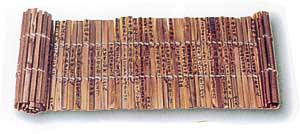The newly renovated Beijing Public Library proffers hope for the
information-starved
No place affords a more striking conviction of the vanity of human
hopes than a public library.
-Samuel Johnson

Standing in the cavernous halls of the Beijing Library, I feel a little
differently: as I become aware of the sheer volume of uncensored and
unrestricted information available here, a joyful feeling of belief
in the future of this land arises as I try to figure out what to read
first.
Sprawling over two city blocks, the Beijing Library (Beijing Tushuguan)
easily wins the title of biggest library in Asia. Although named after
the capital city, this is China's national library, serving the whole
country, containing more than 20 million books and dozens of reading
rooms in which to peruse them.
I am expertly guided through the maze of halls of the west building
by resident librarian Zhang Han. Zhang, 48, has been working in the
foreign periodical section for more than a decade. She is an avid reader
of Chinese literature, and an expert in Chinese literary history.
"The Beijing Library was founded in 1909 with a grant from the Qing
Dynasty's imperial library," Zhang explains at the start of our tour.
She looks around to make sure no one is within earshot, and then adds
quietly, "I guess they knew the end of the dynasty was upon them." The
library continued to grow in popularity and size throughout the first
half of this century, moving in 1945 to a courtyard location near Beihai
(now known as the Ancient Library, closed for construction until 2001).
The library closed its doors during the Cultural Revolution (1966-1976)
when Mao's Little Red Book and a few other ideological texts were the
only books anyone could read without fear of persecution.
"Premier Zhou Enlai saved the library," Zhang says with a nostalgic
sigh.
He was a frequent visitor to the rare books section, and closed off
most of the library in 1966 so the Red Guards could not enter and ransack
it.
The massive collection of books was saved from the total destruction
met by so many other libraries and their books at that time.
The library stayed intact, but the librarians were not as fortunate.
"Our staff, along with other librarians from throughout Beijing were
all sent to Hubei Province, to 'learn from the peasants,'" Zhang recounts.
Here the bibliophiles learned a different repertoire of skills than
those used in most libraries: weeding, digging, and harvesting.
Today, both the library and its staff are back in the business of keeping
Beijing well-read. Located in Haidian District in the west of the city,
they occupy a colossal modern building on Baishiqiao Road, just west
of the Beijing zoo.
Navigating the inside of the building requires some concentration. Once
inside the front door, walk up the stairs and you will find yourself
in the main building. The people in the information booth will be happy
to tell you how to get where you want to go. Before you escape into
the realm of fiction, go to the third floor and purchase a day pass
for RMB1. Foreigners are forbidden to take books out, but a day pass
allows you to use the reading rooms.
A good starting point on your exploration is the foreign periodicals
reading section (north building, rooms 406/409). This section houses
more than a million periodicals, ranging from The New Yorker to National
Geographic to something called Armor: The Journal of Mobile Warfare
that sits incongruously next to Boy's Life.
If books are your passion, go to the card catalog system in the main
lobby, labeled in both English and Chinese. There is a large selection
of western literature offered in Chinese, if you feel the need to recommend
Catcher in the Rye to any disaffected Chinese youth of your acquaintance.
However, if you want to browse, head over to the new foreign books reading
room (north building, room 214). This has high ceilings and full-volume
windows. The combination of natural light and open space makes for a
relaxing space to search through literature inEnglish and a myriad other
languages. The large Russian and Japanese collections are in room 323
(west building), separated because of the large number of publications
in this collection.
The Beijing Library houses some of the oldest books and writings in
the world. One hall contains inscribed bones and tortoise shells dating
from the Shang Dynasty (1700-1100 BC). The rare books section (west
building, room 221) also houses most of the titles once stored in the
imperial libraries of the Song, Yjuan, Ming and Qing dynasties.
The library also boasts an impressive computer arsenal (east building,
room 202). Besides being a very cheap place to access the Internet (RMB
5 per hour), the computer room has scanners and other computer peripherals
for use at reasonable rates. The audio-visual room (north building,
3rd floor, room 415) allows you to watch Chinese and western films (RMB
6 per film), listen to Chinese pop music (RMB2 per disk) and brainwash
yourself with language-learning tapes.
Beijing Library
39 Baishiqiao Lu, Haidian District
Tel: 6841-5566, 6841-9272, 6841-9260
Hours: 9 am-5 pm




